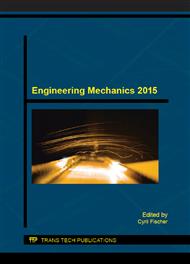p.85
p.91
p.97
p.105
p.113
p.120
p.129
p.138
p.144
Analytical Solution of Hydrostatic Pocket Tilting
Abstract:
Tilting (parallelism error) of guiding surfaces may cause reduction of load capacity of hydrostatic (HS) guideways and bearings in machine tools (MT). Using coupled finite element (FE) computational models of MT structures, it is nowadays possible to determine the extent of guiding surfaces deformation caused by thermal effects, gravitational force, cutting forces and inertia effects. Assessment of maximum allowable tilt has so far been based merely on experience. The paper presents a detailed model developed for description of the effect of HS bearing tilt on the load capacity characteristics of HS guideways. The model allows an evaluation of the tilt influence on the change of the characteristics as well as determination of the limit values of allowable tilt in interaction with compliant machine tool structure. The proposed model is based on the model of flow over the land of the HS pocket under extended Navier-Stokes equation. The model is verified using an experimental test rig.
Info:
Periodical:
Pages:
113-119
Citation:
Online since:
January 2016
Authors:
Keywords:
Price:
Сopyright:
© 2016 Trans Tech Publications Ltd. All Rights Reserved
Share:
Citation:


